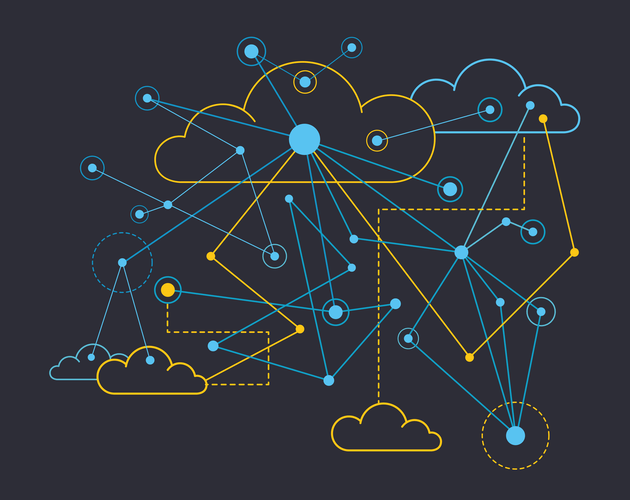The model maintenance plays critical role once the model is deployed into production. The maintenance of machine learning model includes keeping the model up to date and relevant in tune with the source data changes as there is a risk of model becoming outdated in course of time. Also, the configuration management of ML model play an important role in model management as the number of models grow.

The objective of an MLOps team is to automate the deployment of ML models into the core software system or as a service component. This means, to automate the complete ML-workflow steps without any manual intervention. Triggers for automated model training and deployment can be calendar events, messaging, monitoring events, as well as changes on data, model training code, and application code.
Step 5. Evaluate the model’s performance and establish benchmarks
For example, a decision tree is a common algorithm used for both classification and prediction modeling. A data scientist looking to create a machine learning model that identifies different animal species might train a decision tree algorithm with various animal images. Over time, the algorithm would become modified by the data and become increasingly better at classifying animal images. Related to the idea of MLaaS is the concept of Model-as-a-Service, in which cloud-based providers provide metered access to pre-trained models via API on a consumption basis. Some in the industry equate MLaaS with Model-as-a-Service as opposed to cloud-based machine learning platforms.

The typical automated model pipeline in enterprise production environments include 3 types of stores, such as feature store, metadata store and model registry. The feature store contains data extracted from various source systems and transformed into the features as required by the model. The ML pipeline takes the data in batches from the feature store to train the model.
Related Articles
These machine learning toolkits are very popular and many are open source. Many of these toolkits are embedded in larger machine learning platform solutions, but can be used in a standalone fashion or inside of data science notebook environments. The application of machine learning mainly benefits diagnosis and outcome prediction in the medical field .

It may be removed by directly eliminating certain columns or by combining a number of them and getting new ones that hold the most part of the information. PCA identifies patterns in our data based on the correlations between the features. This correlation imply that there is redundancy in our data, in other words, that there is some part of the data that can be explained with other parts of it. Imputing the missing values, with some pre-built estimators such as the Imputer class from scikit learn.
Level-3
But it turned out the algorithm was correlating results with the machines that took the image, not necessarily the image itself. Tuberculosis is more common in developing countries, which tend to have older machines. The machine learning program learned that if the X-ray was taken on an older machine, the patient was more likely to have tuberculosis. It completed the task, but not in the way the programmers intended or would find useful. Machine learning can analyze images for different information, like learning to identify people and tell them apart — though facial recognition algorithms are controversial. Shulman noted that hedge funds famously use machine learning to analyze the number of carsin parking lots, which helps them learn how companies are performing and make good bets.

DeepLearning.AI’s Deep Learning Specialization, meanwhile, teaches you how to build and train neural network architecture and contribute to developing cutting-edge AI technology. In Stanford and DeepLearning.AI’s Machine Learning Specialization, you’ll master fundamental AI concepts and develop practical machine learning skills in a beginner-friendly, three-course program by AI visionary Andrew Ng. Successful AI projects iterate models to ensure the models continue to provide valuable, reliable and desirable results in the real world. Select the right algorithm based on the learning objective and data requirements. Once you’ve appropriately identified your data, you need to shape that data so it can be used to train your model. The focus is on data-centric activities necessary to construct the data set to be used for modeling operations.
1 Dealing with missing data
This article focuses on principles and industry standard practices, including the tools and technologies used for ML model development, deployment, and maintenance in an enterprise environment. Machine Leaning Model Operations refers to implementation of processes to maintain the ML models in production environments. The common challenge encountered in a typical enterprise scenario is that the ML models worked in lab environment will remain stay at the proof-of-concept stage in many cases. If the model is rolled out into production, it becomes stale due to frequent source data changes that requires rebuilding of model. As the models are retrained multiple times, it is required to keep track for model performance and corresponding features and hyperparameters that are used for retraining the model. To perform all these operations, there should be a well-defined reproducible process in-place to implement the end-to-end machine learning operations that keeps the model current and accurate in production environment.
Reinforcement machine learning is a machine learning model that is similar to supervised learning, but the algorithm isn’t trained using sample data. A sequence of successful outcomes will be reinforced to develop the best recommendation or policy for a given problem. Without model management, data science teams would have a very hard time https://www.globalcloudteam.com/services/machine-learning-ai/ creating, tracking, comparing, recreating, and deploying models. ML models should be consistent, and meet all business requirements at scale. To make this happen, a logical, easy-to-follow policy for model management is essential. ML model management is responsible for development, training, versioning and deployment of ML models.
steps to building a machine learning model
MLOps Setup Components Description Source Control Versioning the Code, Data, and ML Model artifacts. Test & Build Services Using CI tools for Quality assurance for all ML artifacts, and Building packages and executables for pipelines. Deployment Services Using CD tools for deploying pipelines to the target environment. Feature Store Preprocessing input data as features to be consumed in the model training pipeline and during the model serving. ML Metadata Store Tracking metadata of model training, for example model name, parameters, training data, test data, and metric results. While building machine learning models is fundamental to today’s narrow applications of AI, there are a variety of different ways to go about realizing the same ends.
- Companies that have already invested in analytics solutions will find that they can retain and expand on their existing analytic tools that now support machine learning development and deployment.
- Usually, us data scientists enjoy running multiple experiments to test different ideas, code and model configurations and datasets.
- In this article, you’ll learn how machine learning models are created and find a list of popular algorithms that act as their foundation.
- The methodology starts with an iterative loop between business understanding and data understanding.
- This preparation includes, but is not limited to, data cleansing, labeling the data, dealing with missing data, dealing with inconsistent data, normalization, segmentation, data flattening, data imbalancing, etc.
- Splitting the cleaned data into two sets – a training set and a testing set.
- A full-time MBA program for mid-career leaders eager to dedicate one year of discovery for a lifetime of impact.
Once you have created and evaluated your model, see if its accuracy can be improved in any way. Parameters are the variables in the model that the programmer generally decides. At a particular value of your parameter, the accuracy will be the maximum. Cleaning the data to remove unwanted data, missing values, rows, and columns, duplicate values, data type conversion, etc. You might even have to restructure the dataset and change the rows and columns or index of rows and columns.
Program Overview: Discover How Our Purdue AI/ML Program Can Transform Your Career
Supervised learning helps organizations solve a variety of real-world problems at scale, such as classifying spam in a separate folder from your inbox. Some methods used in supervised learning include neural networks, naïve bayes, linear regression, logistic regression, random forest, and support vector machine . Exploratory data analysis is an important step that starts once business hypothesis is ready. This step takes 40-50% of total project https://www.globalcloudteam.com/ time as the model outcome depends on the quality of input data being fed to train the model. Exploratory data analysis involves data attributes identification, data preprocessing and feature engineering. Data pre-processing involves identification of missing values and outliers and fill these gaps by computing mean or median for quantitative attributes and mode for qualitative attributes of data to improve the predictive power of model.